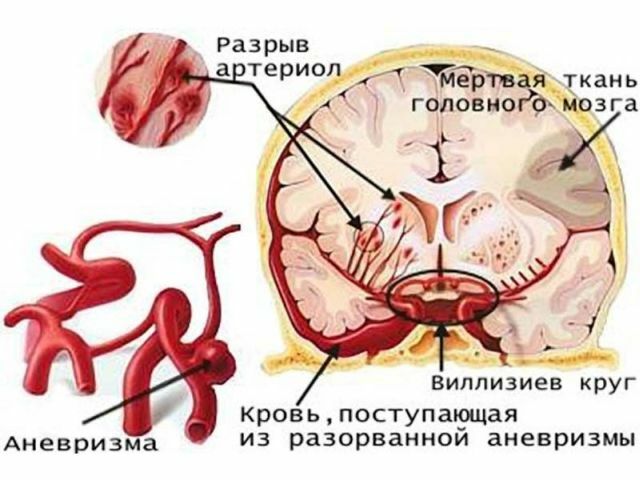Authors:
Volkov AA, endocrinologist, practical experience since 2015.
Tselmer NE, obstetrician-gynecologist, the first qualification category.
June 2019.
ICD-10 code: N91.1
Synonyms: amenorrhea, prolonged absence of menses.
Secondary amenorrhea - absence of menstruation for six months or more for women in reproductive age, as well as having a steady menstrual cycle.
The prevalence of the disease in the population ranges from 3 to 10%.
Besides the lack of menstrual periods, depending on the cause, there may be additional symptoms such as girsurtizm (hirsutism), obesity, infertility, acne, hypertension.
The treatment is based mainly on the use of hormonal agents.
Causes
There are two classifications of secondary amenorrhea.
The first - the division into two groups: physiological and pathological.
- Physiological amenorrhea is possible during pregnancy, menopause, while feeding the baby.
- Pathological secondary amenorrhea - all other options related to the malfunction of the body.
The second classification is based on the causes of secondary amenorrhea.
Who is at risk
Among the risk factors that contribute to the development of secondary amenorrhea, call:
- the presence of excess weight,
- chronic disease or sexual endocrine organs;
- uncompensated chronic diseases,
- strict diets,
- acute infections not only sexual organs, but also the whole organism.
The reasons on the part of the brain (central)
emotional amenorrhea
- It develops due to the strong nervous shock, regular stress is also associated with severe stress, depressing state. For example, many women stop getting their periods during the war. It was called by the term "amenorrhea wartime." The organism is in a danger to life posed sexual instinct by the wayside. The hypothalamic-pituitary system, have not been allocated the proper amount of gonadotropins, the ovaries have not received adequate stimulation and were not functioning.
Pathological changes in the hypothalamus
- Weight loss due to exhausting diets, acute or chronic diseases occurring, anorexia. Menses terminated by reducing the amount of adipose tissue below a critical minimum. Adipose tissue is normally a vneyaichnikovym source of small amounts of estrogen. In addition, fasting and observing a rigid diet is always the case psychological stress, stress, neurosis. As a result, the brain produces less stimulating the ovaries of gonadotropins. Without proper stimulation of the ovaries do not produce sufficient amount of hormones.
- Overly intense exercise.
- Neyroobmenno-endocrine syndrome (disorder with suspected genetic predisposition characterized by disruption of the adrenal glands and ovaries on the background of obesity).
Pathological changes in the pituitary
- hyperprolactinemia (Excess pituitary hormone prolactin synthesis of hormone-active tumors or functional abnormalities). Prolactin is responsible for the growth of the mammary glands and the production of breast milk. Excess prolactin may occur at the pituitary tumor or damaged after neuroinfections, the pathology of thyroid and other endocrine disorders, in severe stress. When an excess of prolactin suppression of gonadotropins occurs in the brain. Then a typical pattern: no gonadotropins - no stimulation of the ovaries - the ovaries do not synthesize sufficient amount of sex steroids - there is no menstruation.
- Effect of tumor formation in the production of pituitary hormones.
- Sheehan's syndrome (destruction of pituitary cells due to impaired blood flow in it during complicated childbirth or abortion).
- Traumatic brain injury with damage to the pituitary gland.
Violations of the adrenal glands
- Adrenogenital syndrome characterized by congenital adrenal hyperplasia.
- Tumors of the adrenal glands are capable of synthesizing male sex hormones (virilizing).
- Or Syndrome Cushing's disease (prolonged treatment with systemic corticosteroids, or increased secretion of adrenal cortisol).
Pathology in the ovaries
depleted ovary syndrome
- cessation of functioning ovaries in women, whose age has not reached the level of 40 years. depleted ovary syndrome develops when the depletion of ovarian reserve of follicles and oocytes. It follicle tissue during oocyte maturation and ovulation in the ovaries secrete sex steroids in every month. The normal supply of follicles ends in 45-55 years (menopause time). With the depletion of ovarian happens prematurely. Margin follicles with this disease may be initially reduced (e.g., genetically laid small, or utero girl on mother's pregnancy affected by toxins, poisons, adverse environmental exposure). When cysts in the ovaries of a large scale can be replaced normal ovarian tissue and lose ovarian reserve. Ova margin is also reduced after surgery to remove a portion of the ovary.
resistant ovary syndrome
- ovarian insensitivity to the hormone produced by the hypothalamus-pituitary system. In the tissues of the ovary a sufficient number of follicles and oocytes, but the ovary is not sensitive to stimulation with gonadotropins. There are speculations about the autoimmune nature of this syndrome. The ovaries are resistant (resistant) to the stimulation of gonadotropin function. Breakage occurs at the receptor level to gonadotropins.
Polycystic ovary syndrome (PCOS)
- the presence of a large number of ovarian ranging in size cysts that violate their normal function. Characterized by impaired ovulation (its absence or rare ovulation), scarce rare menses, or amenorrhea, hyperandrogenism (increased content of androgens in woman's blood). Often (in about half the cases), polycystic ovary syndrome accompanies obesity and hyperinsulinemia. In ovarian follicles at the same time a lot, but their maturation and release of the egg does not occur. When primary form PCOS cause an excess of male sex hormones and insulin is a disturbance in the cycle of formation of these hormones (breakage and enzymes deficit level). In secondary form of PCOS is an excess of male hormones cause other diseases of the endocrine organs (Hypothyroidism, obesity, brain tumors with increased production of hormones prolactin and ACTH, disease adrenal) .;
Gipertormozheniya syndrome gonadal
- developed after taking medicinal hormone preparations. Sometimes menstruation ceases after discontinuation of combined oral contraceptives, post-treatment hormonal agents specific groups to active suppression of endometriosis and uterine fibroids uterus. Usually amenorrhea after drug hormonal therapy alone can be cured in a few months.
Other violations:
- the tumor and cysts Ovarian both benign and malignant;
- the effect on the ovaries or chemotherapy, radiation therapy, surgery consequence, an artificially created menopause.
From the uterus side
uterine pathology:
- endometritis,
- frequent abortive intervention
- atresia of the cervical canal,
- the presence of intrauterine adhesions.
Adhesions (synechiae) in the uterus - Asherman's syndrome
- In this case, damaged menstruating inner layer of the uterus. Women with Asherman's syndrome is always a previous traumatic or inflammatory factors: traumatic abortion, frequent abortions, curettage, infectious complications after surgical procedures with the development of endometritis.
Fusion of the cervical canal (atresia)
- Occur after abortion, cervical surgery (plastic, cervical amputation of Shturmdorfu), cervical electroconization with damage to the basal layer of the cervical canal mucosa. There are adhesions, there is cervical overgrowth and the violation of the outflow of menstrual blood from the uterus. Menstruation may be scarce, spreadable first and cease altogether at full atresia channel.
Signs of secondary amenorrhea
The main symptom of secondary amenorrhea - absence of menstruation for 6 months or more. Often, however, the disorder of menstrual function is complemented by other complaints, among which:
- decreased libido - sexual desire - a sign of androgen deficiency;
- of oily skin, acne, hirsutism, fat deposition in the abdomen and shoulder girdle - signs of excess androgens (male sex hormones);
- reduction in size of the uterus and ovaries, pale and dry mucosa in the vagina - signs of estrogen deficiency;
- "Flushes" (as in menopause), sweating, palpitations, irritability, fatigue, skin aging - deficiency with sex steroids;
- galactorrhea - the appearance of secretions from the breast, even if she is not pregnant and not breastfeeding - when excess prolactin;
- weight gain or, conversely, excessive weight loss in a short period of time without significant changes in diet and lifestyle (Weight gain observed in polycystic ovary syndrome, hyperprolactinemia, and violation of thyroid function gland);
- the appearance on the skin striae ( "stretch marks");
- depression, mood swings;
- fatigue, drowsiness, or sleep quality deterioration conversely until insomnia;
- puffiness of the face, dull and falling hair;
- attacks of tachycardia, increased blood pressure;
- bouts of headaches;
- pain in the lower abdomen
- in PCOS on examination by a gynecologist feels the ovaries increased in volume, dense;
- violation of the visual fields and color perception - when a pituitary tumor.
Tests and examinations
Diagnosis of the existence of secondary amenorrhea is easy. It is much more difficult to doctors to determine the cause of the disease, to choose the best options for correction. The following examinations and tests are usually appointed:
External and gynecological examination
"Red flags":
- excess weight,
- acne,
- girsurtizm,
- male figure with broad shoulders and hips and narrow al.
For complete diagnostics are important to collect detailed patient history (first time menarche, regularity and cycle time, a history of gynecological diseases, abortion, STD).
blood tests
Testing for pregnancy (to determine the level hCG serum) - is always executed at delays menstruation and irregular cycle.
Evaluation of the hormonal status of the blood analysis:
- LH,
- FSH,
- estradiol,
- progesterone,
- prolactin,
- ACTH,
- cortisol,
- 17-OH-progesterone,
- DHEA-S,
- testosterone.
Determination of the concentration of thyroid hormones:
- thyroxine (T4),
- thyroid-stimulating hormone (TTG);
List of recommended assessment hormones can expand or contract depending on the clinical picture in each case.
Additional methods:
- Performing pharmacological tests (progesterone, clomiphene, estrogens and progestins). It is administered in doses of certain hormones organism with subsequent evaluation of the reaction of the organism to them. The method helps to determine which ones of hormones are missing and at what level the deficit arose. When the sample menstrualopodobnoy negative reaction to the introduction of the hormone arises. With a positive patient reacts to the introduction of hormones bleeding from the uterus.
- Analysis for genital infections (gonorrhea, trichomoniasis, syphilis, etc.).
- definition blood glucose, test for glucose tolerance when indicated, for example, polycystic ovary syndrome and obesity;
survey
- hysteroscopy - manipulation, aimed at the inspection of the uterine cavity. It helps diagnose the presence of non-functional endometrium.
- Pelvic ultrasound - reveals adhesions in the uterine cavity, Hematometra, reducing the size of the uterus and ovarian cysts, lack follicles in the ovaries, the lack of growth of the endometrium in the uterus, lack of ovulation, polycystic and increase of the ovaries with a dense capsule.
- diagnostic laparoscopy - operation performed for diagnostic purposes, particularly informative in secondary amenorrhea ovarian origin. Laparoscopy is also indicated for the clarification syndrome diagnosis depleted or resistant ovarian, in the case of infertility in women and to prepare for IVF.
- CT or MRI of the pituitary gland in cases of suspected pathological changes in the work of this body;
- X-ray "Turkish saddle" for suspected pituitary tumor - prolactin.
- renal ultrasound, According to testimony in / intravenous urography - necessary for all patients with malformations of the reproductive system, often associated with renal anomalies.
- Ultrasonography of the adrenal and thyroid glands.
treatment of amenorrhea
Treatment of amenorrhea has been a gynecologist, endocrinologist or gynecologist in tandem with the endocrinologist.
Treatment of secondary forms of amenorrhea depends on its origin. The main goal - to restore menstruation and, if possible, the reproductive function.
Treatment may be directed to the immediate reason for the absence of menstruation, when it is known. If the cause of the disease is not clear, or the disease itself is incurable, symptomatic therapy is appointed.
If amenorrhea is caused by a chronic illness, it first sought compensation, and then normalize the menstrual cycle.
Important points therapy amenorrhea otnesom also:
- psychotherapy;
- physiotherapy;
- Healthy Lifestyle, normalization regime of sleep and rest;
- If you lose weight - high-protein diet, consult a therapist or psychiatrist with anorexia;
- Amenorrhea caused by obesity, is corrected by the low-carbohydrate diet, increase physical activities;
- When psychogenic form - reducing stress influences, consultation with a psychologist, the use of sedatives.
therapies
medical
Here, the gynecologist and the patient must clearly know the purpose of the treatment:
- restoration of normal menstrual function and hormonal levels in the absence of the desire to conceive or
- menstruation restore ovulation and birth of a child.
Drugs and treatment strategy in these situations will vary.
Hormone Replacement Therapy
When resistance syndrome or depleted ovaries
- shown hormone replacement therapy (HRT). One of the easiest application of HRT in this case is a drug "femoston". Treatment is carried out to an average age of menopause, according to indications longer.
In hypothyroidism
- hormone replacement therapy with thyroid hormones.
when hyperprolactinemia
- "Bromocriptine", "dostineks".
Drugs with antiandrogenic action and hyperandrogenism in PCOS
Again, we are talking about two to treatment
- reduction in the severity of an excess of male hormones, androgens
- restoration of the ability to procreate.
Achieving the goals (e.g., contraceptives) may precede the second achieve. COCs are divided into groups, including the presence of anti-androgenic effect. For abating androgen excess: oral contraceptives with antiandrogenic progestins - ethinyl estradiol + cyproterone ( "Diana-35"), ethinyl estradiol + dienogest ( "Janine"), cyproterone (at oral ineffectiveness contraceptives).
Also possess antiandrogenic effect formulations of glucocorticoids, for example, "Dexamethasone" at a dose of 0.5 mg per night and diuretic "spironolactone" or "veroshpiron" (100 mg 1-2 p. / Day.).
The effects of hormone replacement therapy for unwanted hair growth on the face and body, improve skin and hair condition rarely occurs quickly (improvement observed not earlier than after 3-6 months). Often need artificial hair removal: shaving, electrolysis, chemical hair removal.
Formulations for stimulation of ovulation in the ovaries (e.g., PCOS)
- use special Regimen "Clomiphene" and "puregon".
Stimulation of ovulation is used under conditions of absence and presence of menstruation obesity. These drugs allow the mature follicles in the ovaries. In some cases, pregnancy occurs after ovulation induction alone, and in other cases stimulation makes it possible to pick up the ripened egg IVF.
Formulations for increasing insulin sensitivity in PCOS obesity and hyperinsulinemia
- "Siofor", "metformin"
These drugs help patients with hyperinsulinemia in the fight against weight loss, reduce the density of the ovarian capsule. Weight loss and decreased insulin levels in PCOS are needed for a more favorable outlook for the conception and birth, as well as for the prevention of insulin-dependent diabetes connection.
Surgical treatment
Surgical intervention is necessary in case of synechiae in the uterine cavity and seam in the cervical canal.
The patient is conducted to expand and probing the cervical canal in a hospital.
Synechia destroyed during hysteroscopic surgery and hysteroresectoscopy. This vaginal surgery performed in a hospital under general anesthesia. After surgical removal of adhesions is assigned a course of anti-inflammatory therapy (antibiotics, NSAIDs, means to prevent disease, enzymes, physiotherapy) and hormone replacement therapy.
Surgical treatment is also used with no effect on conservative treatment of PCOS. Held operating laparoscopy, ovarian knurled dense capsule.
When gipertekoze and ovarian tumors that secrete male hormones, ovarian excision shown.
Surgical treatment is also used in the case of increasing hormone-producing pituitary tumor (e.g., prolactinoma).
The method of assisted reproductive technology
(Including IVF) - it is in some cases the only way to become the mother of the woman.
Prediction and prevention
Secondary amenorrhea with timely diagnosis and early treatment has a favorable prognosis. Possible to restore menstruation and reproductive function of women. The main complication of neglect - is infertility, which can be hard to resist the correction, and require the use of reproductive technology procedures.
Course and prognosis depend on the cause of amenorrhea. When the hypothalamic-pituitary reason amenorrhea appearance of menses for 6 months was observed in 99% of patients, especially after the correction of body weight.
With appropriate timely correction of the endocrine abnormalities in the body to restore menstrual function prognosis is favorable. However, we must remember that treatment usually takes a long period, usually not less than six months.
Forecast for procreation depends on the cause of amenorrhea. Procreation is not possible with the advanced stages of ovarian failure syndrome.
Self-conception and childbirth occur in patients after correction of hyperprolactinemia, hyperandrogenism, thyroid hormones. With stimulation can induce ovulation in PCOS pregnancy and to pick up procedure in vitro fertilization the egg with resistant ovary syndrome (at another saved cycle). IVF with donor egg and surrogacy can help women with ovarian syndrome exhaustion.
Given the multitude of factors capable of provoking secondary amenorrhea type specific prevention has not been developed.



